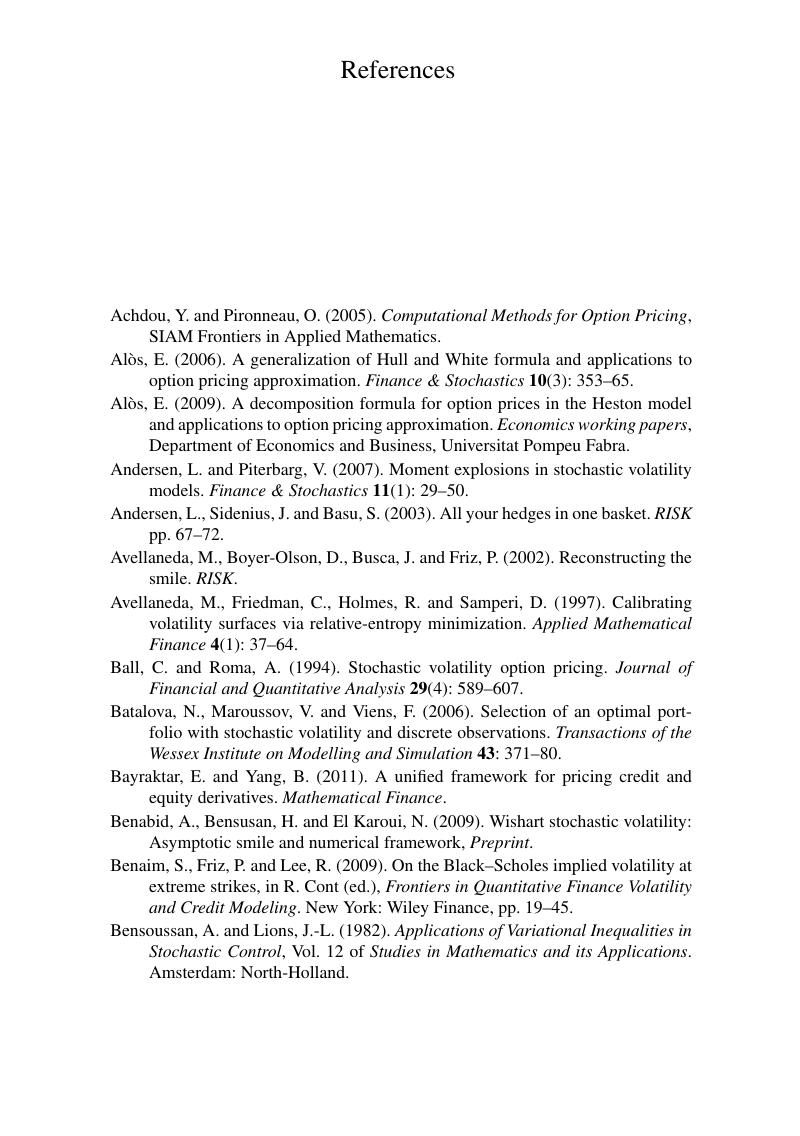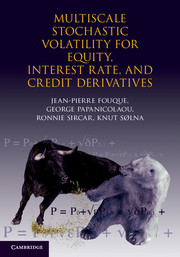Book contents
- Frontmatter
- Contents
- Introduction
- 1 The Black–Scholes Theory of Derivative Pricing
- 2 Introduction to Stochastic Volatility Models
- 3 Volatility Time Scales
- 4 First-Order Perturbation Theory
- 5 Implied Volatility Formulas and Calibration
- 6 Application to Exotic Derivatives
- 7 Application to American Derivatives
- 8 Hedging Strategies
- 9 Extensions
- 10 Around the Heston Model
- 11 Other Applications
- 12 Interest Rate Models
- 13 Credit Risk I: Structural Models with Stochastic Volatility
- 14 Credit Risk II: Multiscale Intensity-Based Models
- 15 Epilogue
- References
- Index
- References
References
Published online by Cambridge University Press: 07 October 2011
- Frontmatter
- Contents
- Introduction
- 1 The Black–Scholes Theory of Derivative Pricing
- 2 Introduction to Stochastic Volatility Models
- 3 Volatility Time Scales
- 4 First-Order Perturbation Theory
- 5 Implied Volatility Formulas and Calibration
- 6 Application to Exotic Derivatives
- 7 Application to American Derivatives
- 8 Hedging Strategies
- 9 Extensions
- 10 Around the Heston Model
- 11 Other Applications
- 12 Interest Rate Models
- 13 Credit Risk I: Structural Models with Stochastic Volatility
- 14 Credit Risk II: Multiscale Intensity-Based Models
- 15 Epilogue
- References
- Index
- References
Summary

- Type
- Chapter
- Information
- Publisher: Cambridge University PressPrint publication year: 2011



